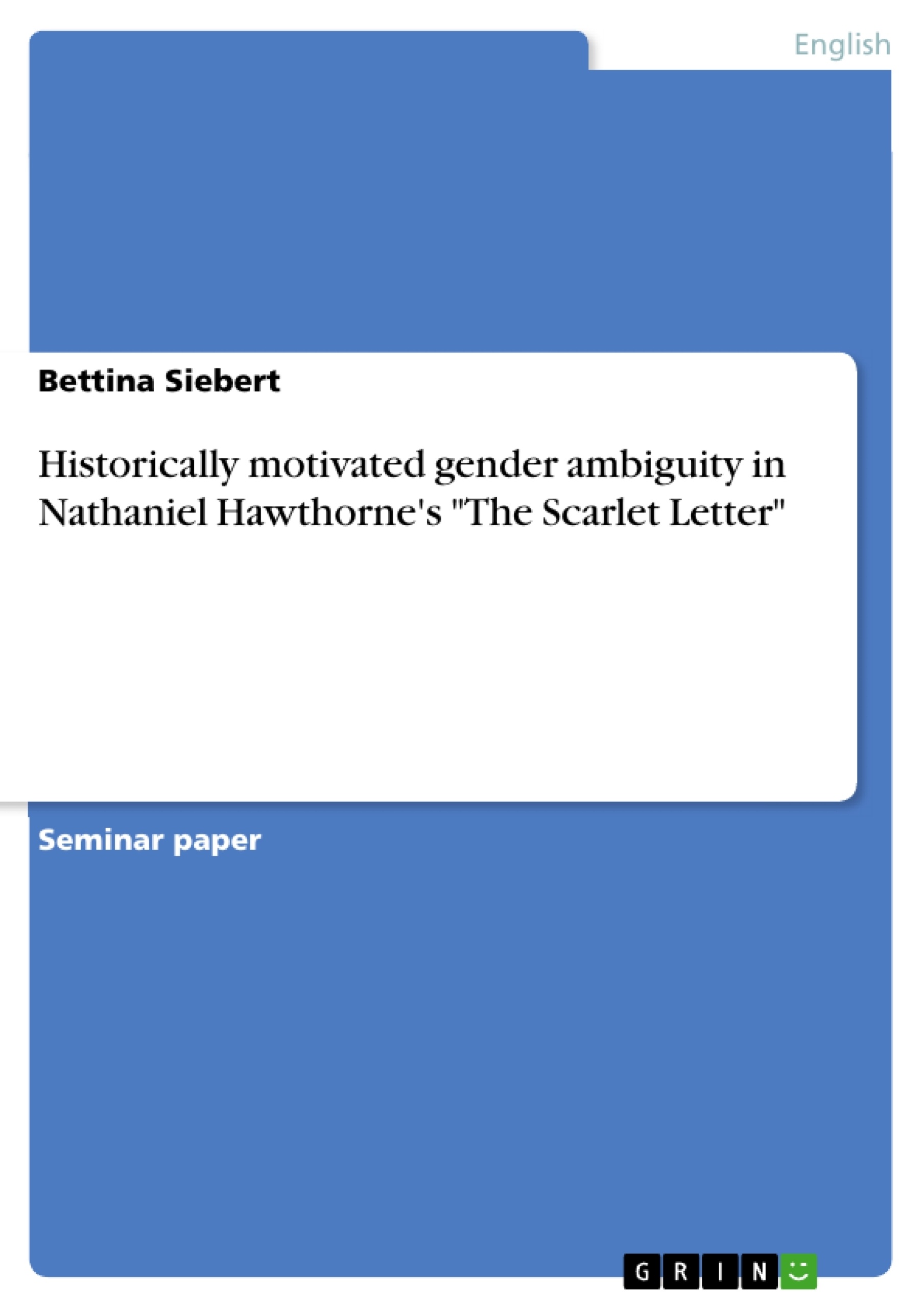Breaking with the tradition of examining "The Scarlet Letter" by Nathaniel Hawthorne for traces of (proto-)feminism, the paper approaches the idea of gender in analyzing the interplay of the time periods underlying the literary work - the 19th century as the time of writing and Puritan times as the setting of the plot. In the 200 years between the two moments, ideas of gender have changed with commencing ideas of female empowerment in Hawthorne's time. Looking at the shifting understanding of gender, the construction of femininity and masculinity is analyzed with a focus on the two protagonists - Hester Prynne and Arthur Dimmesdale. Overall, the gender relations between the two main characters change into opposite directions. Thus, Hawthorne's writing destabilizes conventional Puritan ideas of pre-ascribed spheres and gender roles.
It has become an academic tradition over the past decades to scrutinize historical literary pieces for traces of feminism. Nathaniel Hawthorne's "The Scarlet Letter" has been a prime object of interest for several scholars in this pursuit. The story of Hester Prynne who is outlawed by Puritan society after having committed adultery represents an early work to have a protagonist who breaks with the law of her time. This might be the reason why in an earlier tradition the novel has been read with Arthur Dimmesdale, the young reverend and Hester's lover, as the central figure. Approaches involving feminism and gender studies challenged this reading. Their focus however primarilyseems to be the tracing of feminist attitudes in Hawthorne's writing. In this approach the historical perspective of the literary work is often read from a contemporary angle creating a hybrid reading that involves three time frames, namely the Puritan time of theplot, the 19th century setting of the novel's writing and the contemporary moment of thenovel's reading.
Table of Contents
1 Introduction
2 Survey of Gender Roles in Historical Contexts
2.1 Gender in Puritan Contexts
2.2 Shifting Gender Understandings in Hawthorne's Time
3 Gender Roles in The Scarlet Letter
3.1 Female Gender and Hester Prynne
3.2 Male Gender and Arthur Dimmesdale
4 Conclusion
Bibliography
- Arbeit zitieren
- Bettina Siebert (Autor:in), 2017, Historically motivated gender ambiguity in Nathaniel Hawthorne's "The Scarlet Letter", München, GRIN Verlag, https://www.grin.com/document/459922
-

-

-

-
Laden Sie Ihre eigenen Arbeiten hoch! Geld verdienen und iPhone X gewinnen. -

-
Laden Sie Ihre eigenen Arbeiten hoch! Geld verdienen und iPhone X gewinnen. -

-
Laden Sie Ihre eigenen Arbeiten hoch! Geld verdienen und iPhone X gewinnen. -

-
Laden Sie Ihre eigenen Arbeiten hoch! Geld verdienen und iPhone X gewinnen. -

-
Laden Sie Ihre eigenen Arbeiten hoch! Geld verdienen und iPhone X gewinnen. -

-
Laden Sie Ihre eigenen Arbeiten hoch! Geld verdienen und iPhone X gewinnen.

